Wanna join the team?
If you’re interested in selling your spoon blanks or spoon carving tools or just to share your spoon carving adventures via our blog feel free to apply.

Nils Ögren and I connect via Zoom. He’s an axe maker so I half expect, a bit naively, to catch him in the forge, but he’s currently indoors in what appears to be a room dedicated to music. On the wall behind him hang guitars and basses.
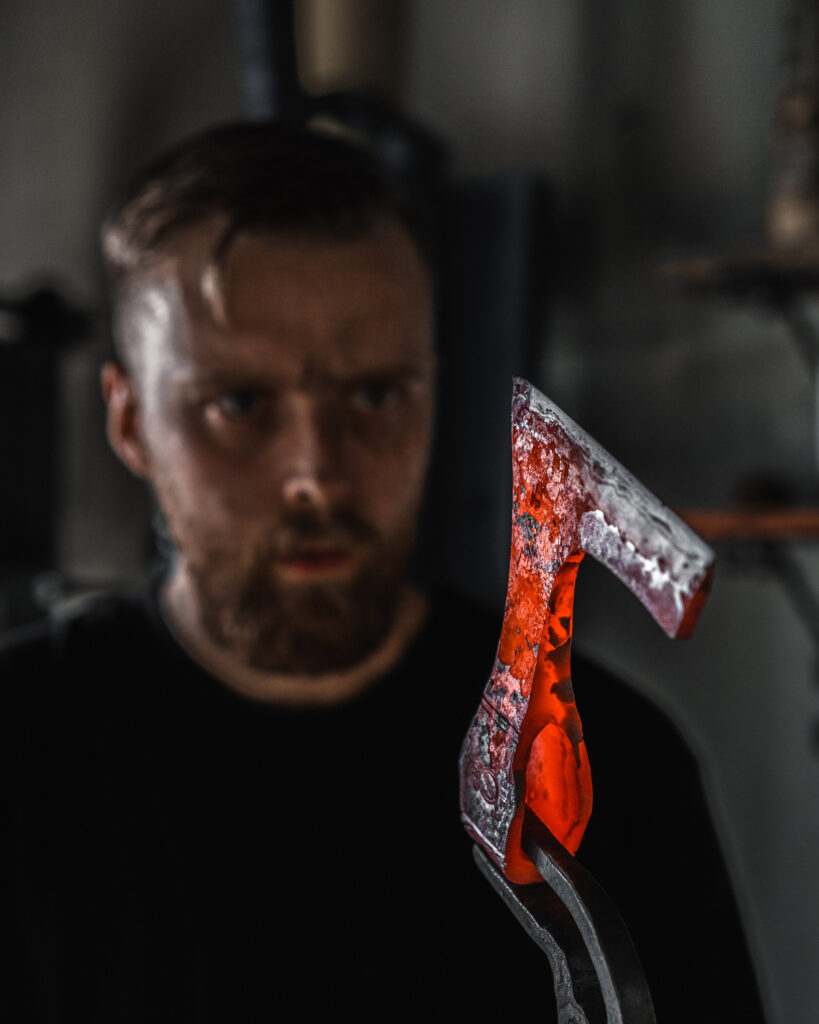
Hello Nils, I see a lot of instruments, but you make axes, don’t you?
Yep.
Can you tell me a bit about what that means?
Well sure, I take steel and manipulate it using fire and hammers and create tools that people can use.
Do you just make axes or do you make other stuff too?
I almost only make axes. There might be a shoehorn here and there and a candleholder for the winter, but otherwise it’s almost all axes.
How did this journey start for you then?
I think I was 24 when I saw a YouTube video with some people forging tools and so I wanted to try it. I didn’t really know what I was doing, no experience whatsoever, but I took a piece of iron and started filing on it. And then my dad came into the workshop and said “you can use an angle grinder, it’s faster” and so I tried it. I had never used an angle grinder in my life.
Then I thought maybe I should forge the blade a little bit too, so I took an old grill and put charcoal on it and that’s the way it started…
For years I stood out in the yard here with the grill and just went for it, and then eventually I guess I found something that worked…
Was the grill used for grilling other stuff too?
No, no…
But who had a workshop? Did you already have a workshop or?
It was a regular garage, sort of my father’s. We’re in the country, I’m from a farm. So you have a workshop because you need to fix the tractor and so on. But that wasn’t where I forged – I was out in the yard. But now I’ve built my own workshop.
Are you self-taught or have you taken courses? Have you watched tutorials online?
The short answer is that I’m self-taught. You learn the more you keep trying, and the more you fail, the more you learn. Then I’ve sat and really carefully studied videos on YouTube. You notice pretty quickly that a lot of the videos that are out there on Youtube don’t show the whole story. They show short sections, usually to create a good flow cinematically, so learning to Youtube can be quite difficult because you miss much, usually all the mistakes. So it’s a bit tricky, but if you’ve got some brains, you’ll get through the mistakes. I do make mistakes every day, I should add, but not as big as in the beginning, and not as often.
Then you get to know people over the years who are skilled and educated or have a lifetime of experience, and if you ask nicely, they’ll give you feedback and help you. That way you learn too.
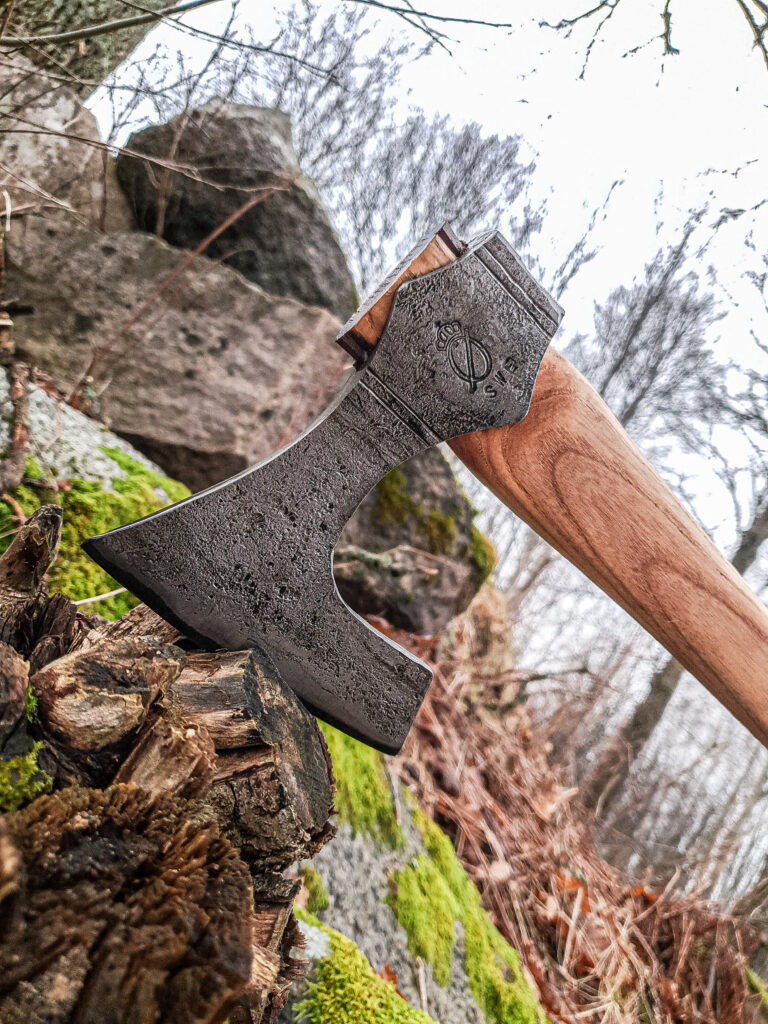
So how long have you been doing this?
I picked up that metal bit and started in 2017…
If someone wants to learn, what’s your best tip?
My tip is to take courses. It would have helped a lot in the beginning. And to be very, very humble and let it take a very long time.
It’s a marathon, not a race.
That’s almost always the case. I was trained as a musician before, hence my stuff on the wall. People talk about ten thousand hours and maybe that’s a myth, but there’s something about having done your hours and gaining muscle memory.
You should be able to see a problem and solve it, and you get better at that as you go along. And then you get faster, which means you can produce better and more. You need to develop some kind of intuition.
You can’t sit on YouTube and watch 100 videos and think you know something. You have to go out and do it as well. There are very good courses in Sweden where you get a really good, broad foundation.
How long does it take to make an axe head?
You usually start from some kind of blank, it may come as a round bar, square or rectangle and then you have to work it down to the right starting point depending on the model you’re making. There are other ways of doing it too, but that’s how I do it. And then the actual forging process. I usually break it down into different stages. This morning I was out forging four axes that are almost done and that’s 80 percent of the work and goes fast, but the last 20 percent takes a long time because that’s when the finishing touches come in. To get it really good, it takes time.
And what are we talking about in terms of time?
I do several at the same time, but you could say I can do one a day on average, working with full focus.
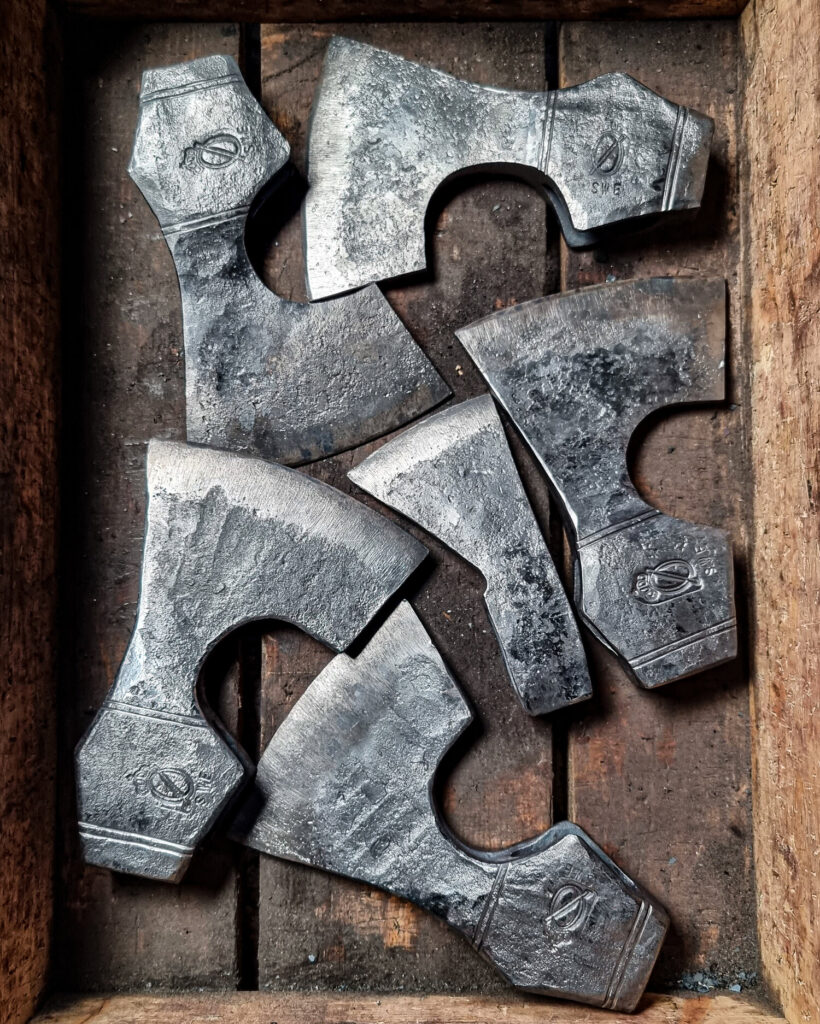
It’s hot when you forge, isn’t it?
Yeah, yeah. About twelve hundred degrees in the forge itself.
Have you ever burnt yourself?
Yes, many times and I’ve cut myself lots of times. Yesterday, for example, I cut my finger. You can be as careful as you like, but you always manage to mess it up somehow sooner or later.

Do you do this full-time or do you do something else on the side?
I used to be a part-time music teacher and had the blacksmith shop part-time. But as of June, I went full-time. Occasionally some freelance gigs come along, and I’ve been mixing a podcast for two years now. And yesterday a farmer called and wanted help running grain and I did it because it’s fun to do some other stuff sometimes too.
What did you do for the farmer?
I drove the tractor.
Is there any similarity between music and blacksmithing?
Both require a lot of discipline and a lot of focus, and doing it many, many, many, many times to get good at it. The actual process itself, I think, is more creative in music, because it can take almost any form. In blacksmithing you also have a lot of freedom, but within certain limits. I would say that music is much freer.
Do you use your own axes?
I have all the originals, of course. Then when we go out camping in the woods, for example, I have my little axe that I take with me, which I made it myself. And then I always have an axe in the car, although maybe you shouldn’t tell the police that, but I do.
When you meet new people and say you’re a blacksmith, what’s their reaction?
Often they think it’s cool and different. They ask if I sell at fairs, and wonder how I got started. It’s an unusual profession, there aren’t many of us in Sweden who do this full-time. However, there are many people who do it part-time who are really good at it.
There’s this old image of what a blacksmith is. Back in the day, maybe there was more of a village blacksmith who solved a lot of problems in the village. You’d come to them with a broken bicycle or you needed a hook. You needed an axe. It was very varied and everyone needed help. That particular thing has disappeared a bit. Now it’s perhaps more welding and bending metal. Going to markets and selling can be a hard way to make a living.
For me, social media and my own online shop became the way to go. If I were to do this here where not many people live… It would never happen. Never ever. But now it works because the whole world can buy if they want to.
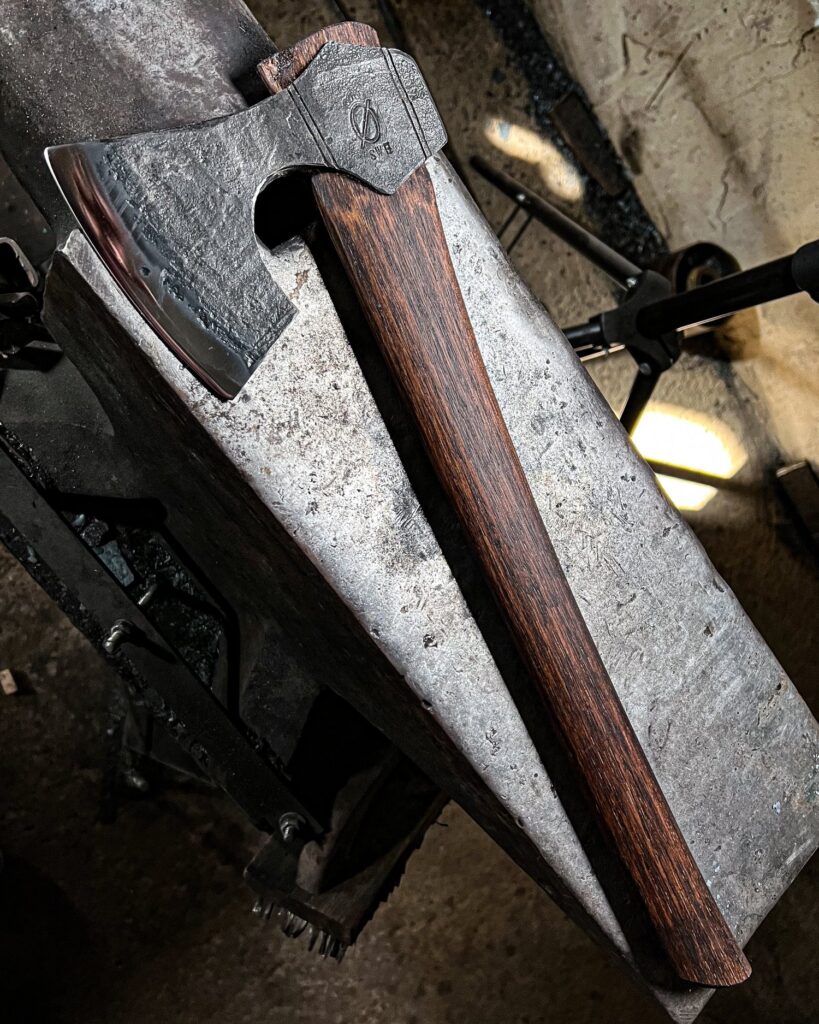
What is the best thing about your profession?
I like to sleep late in the morning, so the freedom is great. But it comes with responsibilities and other stuff.
What’s the worst thing, if there is one?
I guess it’s sweating all day. And the dirt up your nose. I usually have the doors open so it draws well.
You and The Spoon Crank are developing a carving axe together. Do you want to tell me a little bit about it?
Yes, it’s a model that’s new to me. I had been thinking about making a carving axe for a long time, and actually made a prototype maybe 1.5 years ago. But it never came to anything, because I wasn’t really satisfied and I didn’t know enough about the actual craft it would be used for. I wanted to somehow get more information and experience through someone. It was put on hold because I was busy. But then I was contacted by Dionisis and my interest came back, so I thought “let’s do it”. It’s really exciting.
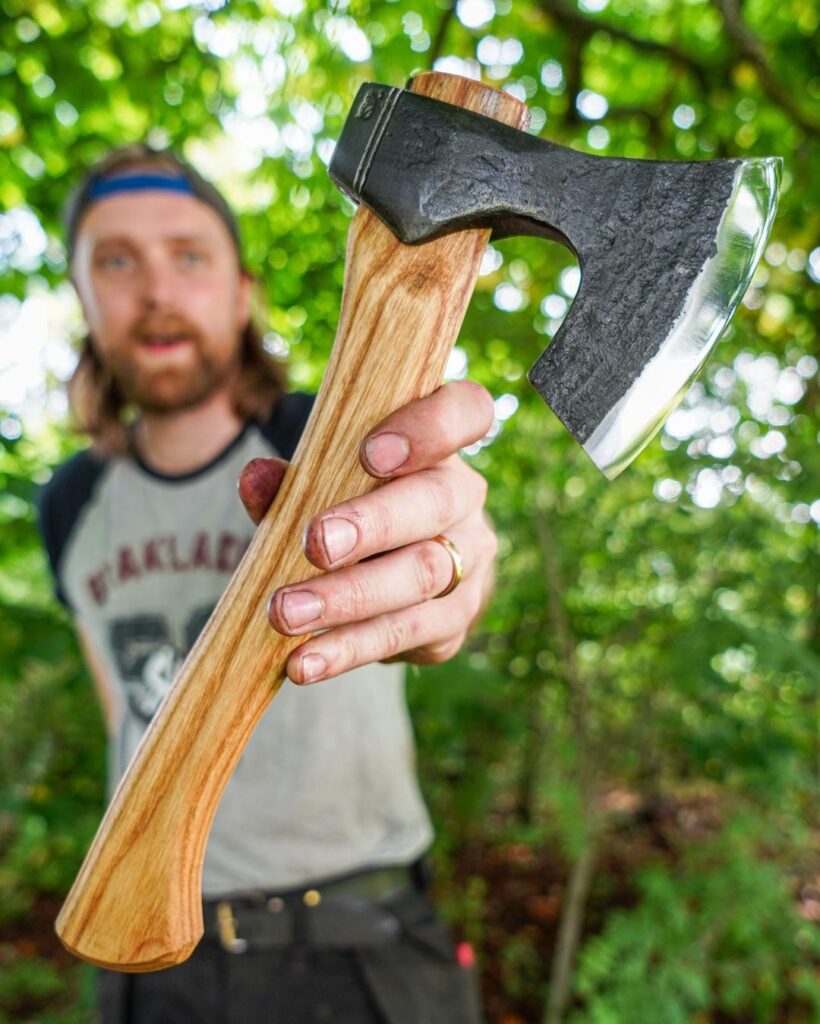
Do you have any role models?
One of the people who has meant the most to me personally has been the blacksmith Torbjörn Åhman and our contact. He is known from Youtube. And also Fredrik Thelin who makes axes. In my world he is one of the best there is, and he is one of those I mentioned earlier who has given criticism on my work. When I went to visit him, I learned more in one day than I did myself in two years. And then we have companies in Sweden that are world renowned in their axe production, which I think is cool. You get the urge to do better and hopefully get a good reputation yourself, so I have a great source of inspiration there.
Do you usually have any students or give courses?
I’ve had a few here, but I find it very difficult. Not that I don’t want to share, but when I’m standing and working, I go into myself, and having someone else there bothers me a bit. I just want to listen to my audiobook and work.
It’s a little different from teaching music, maybe?
Music has two parts really. The part you do at home in your own time, when you’re learning the material. And then the exciting part when you all get together. How’s this going to sound now?
Maybe humans have some kind of need to be left alone?
I think so. I know a lot of people who say that blacksmithing would be some kind of therapy for them, and that’s technically wrong, because that’s not what therapy is, but we could maybe agree on that it’s some kind of meditative moment. There might even be some kind of spirituality there… you kind of get in touch with something in yourself. We need to come into contact with our emotional life and spiritual life sooner or later, and it’s very peaceful to do that.
What does the future look like? What do you have coming up?
I don’t have a business plan, but I have different marketing channels that I’m working with, YouTube and Instagram for example, and then the actual forging and sales work.
Before I was full time there was a relaxation in having another job, which allowed me to have fun in the forge and test stuff and focus on making videos etc. But since I went full-time, it’s become clear that it’s a lot harder now. Now I’d almost need to hire someone to come in and film and I can’t afford that, so it’s a really difficult balance. Just try to have a hobby on top of that, it’s barely possible.
To draw a parallel to music again, there’s always someone better than you. There’s some Japanese guy sitting there in his boyhood bedroom playing guitar and he’s as good as it gets. But nobody knows he exists because he’s never stepped out of the boys’ room or the girls’ room. All due respect for that though!
You can be as awesome as you want, but if no one knows you exist…
Is there anything in particular you’d like to share or tell us about?
This axe we’re working on is something out of the ordinary, for me anyway. We’ve made a prototype that wasn’t perfect in any way, but it has something, so stay tuned because it’s going to be really, really good I think. I’m going to put everything I’ve got into this. We’re going to do prototype number two, and the idea is that Dionisis will come here and be part of it, but then I was clear that he can’t be part of the whole process, because I can’t handle that. I said, you can come in and out of the forge for short periods of time, and then you can look around the village, hehe.
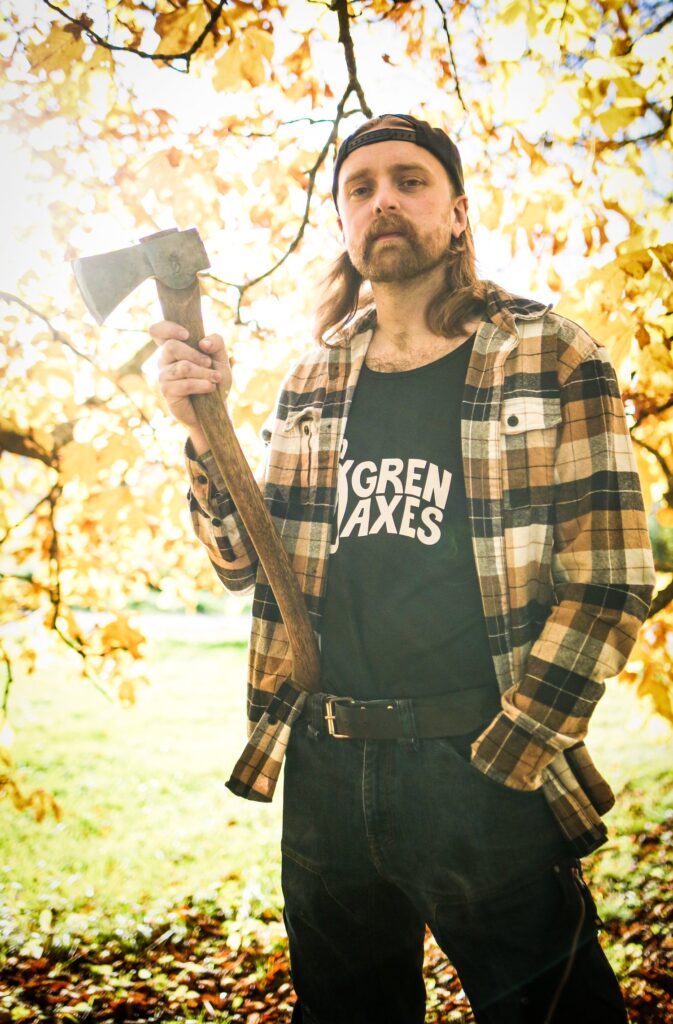
Follow Nils on Instagram @nilsogren, visit his website nilsogren.com and watch his videos on his YouTube channel.
For more info about Torbjörn Åhman visit https://www.youtube.com/c/torbjornahman
For more info about Fredrik Thelin visit https://www.facebook.com/fthelinsmide/
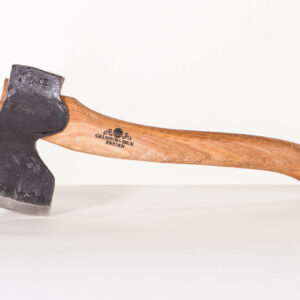
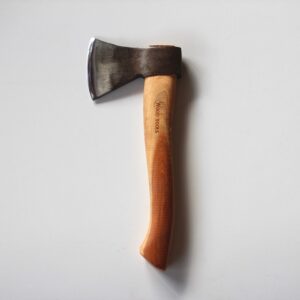
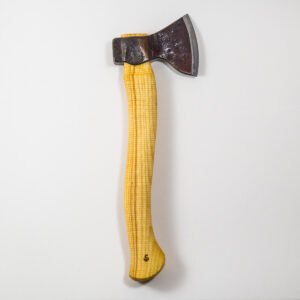
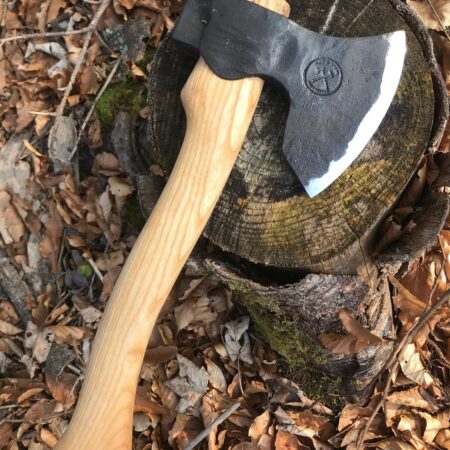



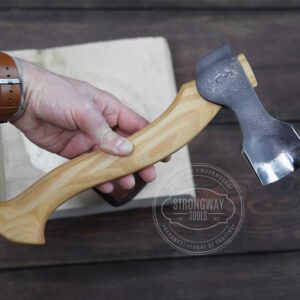
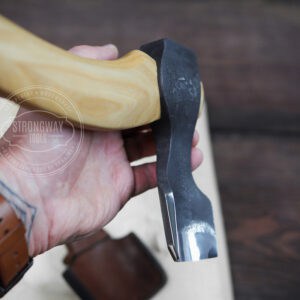
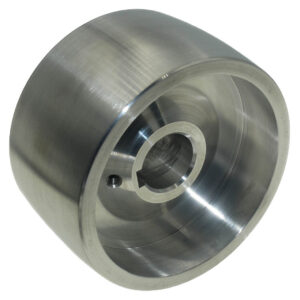
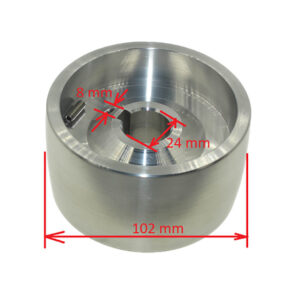
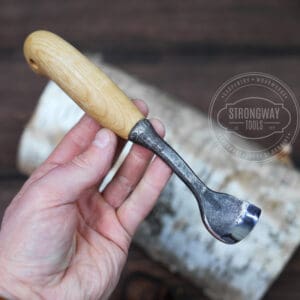
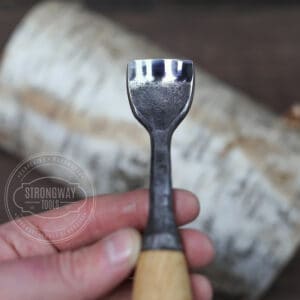

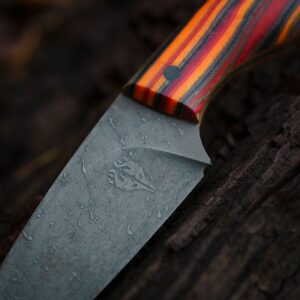
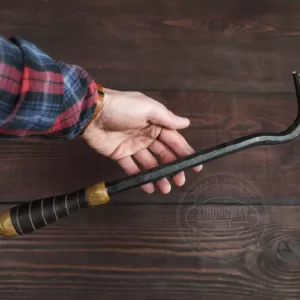
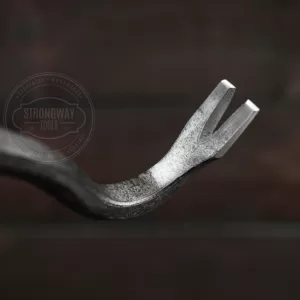
If you’re interested in selling your spoon blanks or spoon carving tools or just to share your spoon carving adventures via our blog feel free to apply.
|
|
Thank you for Signing Up |






Enter below the tracking number of your order to track it.
